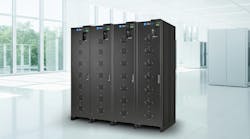Service Level Agreements: How Service Providers Define and Meet SLAs
In this week’s Data Center Frontier Voices of the Industry, Josh Moody, FORTRUST’s Senior Vice President of Sales and Marketing, highlights the most important elements to analyze in colocation service level agreements.
Josh Moody, SVP Sales FORTRUST
When implementing data center colocation services, one of the most important elements to analyze is the Service Level Agreement a provider offers. This all-encompassing document defines and outlines the level of support and services customers can expect, ensuring a concrete agreement between the provider and the client. However, SLAs can be very complex, and must be examined closely to guarantee a firm understanding of what is being offered and what the customer will see as a part of services.
What do service providers typically include in their SLAs? And how do they look to meet these benchmarks? Today, we’ll take a look at the complex world of SLAs, what should be included in these documents, what customers should consider and how providers ensure the agreement is met.
Clients must have a way to measure the service level they receive from their provider.
What is included in a typical SLA?
- A description of service: This section outlines what services the client will be receiving, as well as how the provider defines those services.
- Service standards: This is where reliability, uptime and problem resolution come into play. Here, the service provider will outline the percentage of time they can guarantee service availability.
- Duration: This section defines the period of which services will be available, including a concrete start and end date. It can also include stipulations relating to allowable downtime for planned and unplanned events.
- Roles and responsibilities: This is an especially important section of the SLA, for the service provider as well as the customer. This part will define each party’s role and responsibility depending on the service being provided as well as the client’s needs and internal IT strategy.This section also denotes the individual on the vendor’s side – the service level manager – that is in charge of the management of service levels. In addition, this part will also identify a customer representative, or the contact on the client’s side responsible for discussing or negotiating services.
- Evaluation criteria: This is another key part of the SLA, where the client and vendor lay out the specific metrics that will govern their services. Depending on what services are being offered, these can include measurements for power usage, cooling resources, relative environmental humidity and other benchmarks.
How do service providers meet SLAs?
“Without the proper transparency, it would be impossible to tell if the vendor is meeting the service level.”
TechTarget pointed out that SLAs must be quantifiable, and these measurements are laid out specifically in the SLA. However, without the proper transparency and tools to analyze these metrics, it would be impossible for the client to tell if the vendor is meeting the service level outlined in the document.
Now, many providers have monitoring technology in place to help them keep track of benchmarks and ensure that clients are not using more than agreed-upon number of resources. However, it was not until recently that a client-facing version of this solution has been offered.
FORTRUST is leading colocation provider who offers each client access to COLOVIEW, a platform that provides specific metrics for power, cooling, relative humidity and other factors related to the client’s data center space. In this way, the customer can see exactly how many resources they are using, and how these compare to the SLA. To find out more about how FORTRUST or service level agreements please visit FORTRUST.


